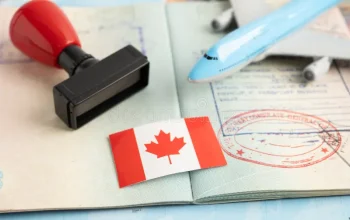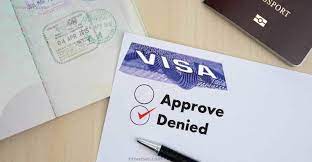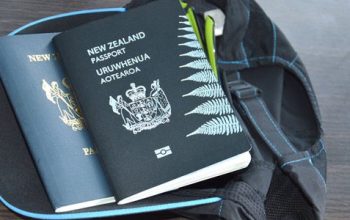Understanding the Indian Visa Rejection
Getting your Indian visa rejected can feel like a punch in the gut, especially if you had high hopes for your trip. But don’t let this setback dim your travel dreams! Understanding why your visa was rejected is the first step to getting back on track. In this guide, we’ll explore common reasons for rejections, what to do if it happens, and how to improve your chances next time. INDIAN VISA REJECTED
Common Reasons for Indian Visa Rejection
Visa applications can be tricky, and several common pitfalls lead to rejections. Let’s break these down so you can navigate your application more effectively.
1. Incomplete Documentation
One of the biggest reasons visas get rejected is due to missing documents. Imagine packing for a trip and forgetting your passport—devastating, right? The same principle applies here. Make sure to read the application requirements thoroughly and double-check your paperwork!
2. Incorrect Information
Accuracy is crucial. Even a tiny mistake, like a misspelled name or incorrect date, can raise red flags. Think of it as an exam: one wrong answer can cost you the grade. Always verify that all the details match your official documents before submission.
3. Previous Visa Violations
If you’ve had issues with visas in the past, it might haunt your future applications. Authorities keep a record, and previous violations can negatively impact your chances. It’s like trying to get a second chance after a bad grade; you need to show improvement! INDIAN VISA FOR IRELAND CITIZENS
4. Financial Insufficiency
You must demonstrate that you have enough funds for your stay. This requirement acts as a safety net for the country, ensuring visitors won’t overstay due to financial difficulties. Think of it like having a sufficient balance before buying that new gadget—it’s just good planning!
5. Security Concerns
Security is paramount for any country. If your application raises any suspicion—like a lack of a clear travel itinerary or ties to your home country—you could face rejection. Imagine being at a concert and getting kicked out for suspicious behavior; it’s all about safety!
Steps to Take After Visa Rejection
So, your visa application didn’t go as planned. What now? Here’s a roadmap to navigate the aftermath and get back on track.
1. Assess the Rejection Notice
Your first step is to carefully read the rejection notice. It’s not just a piece of paper; it’s a guide. Understanding the specific reasons for the rejection is like having a map for your next adventure—essential for planning your next move!
2. Gather Necessary Documentation
Once you know why your visa was rejected, it’s time to gather the necessary documentation. This might involve collecting new financial statements, clarifying previous visa issues, or even obtaining additional support letters. Think of it as gathering your gear before a big hike—you want to be prepared!
3. Contact the Visa Office
Don’t hesitate to reach out to the visa office if you need clarification. They can provide guidance and may help you understand the rejection better. It’s like having a mentor when you’re unsure about a subject—sometimes, you just need a little help to get through!
4. Reapply for the Visa
With all your ducks in a row, it’s time to reapply! Ensure you address the previous rejection points. It’s a chance to start fresh, much like trying again after a missed opportunity. Remember, persistence is key!
Tips to Avoid Visa Rejection in the Future
Learning from mistakes is essential, but why not avoid them altogether? Here are some tips to increase your chances of a successful visa application next time around.
1. Double-Check Your Application
Take your time! Go over your application multiple times to catch any errors or missing information. It’s like proofreading an important email before hitting send—better safe than sorry!
2. Seek Professional Help
If the visa process feels overwhelming, consider hiring a professional. Immigration consultants can provide valuable insights and help you navigate the complexities. Think of them as your travel guides in the world of visa applications!
3. Stay Updated on Visa Regulations
Visa requirements can change, so make sure you’re up to date. Subscribe to newsletters or check official government websites regularly. Imagine navigating a city without a map—staying informed keeps you on the right path!
Conclusion
Facing a visa rejection can be frustrating, but it’s not the end of your travel dreams. By understanding the reasons behind the rejection, taking the necessary steps, and applying the tips provided, you can enhance your chances for future applications. Remember, every setback is an opportunity to learn and grow—so don’t lose hope!
FAQs
1. Can I appeal a visa rejection?
Yes, you can appeal, but the process varies by country. Check with the respective visa office for details.
2. How long does it take to process a new application?
Processing times can vary; it’s best to check the official website for current timelines.
3. Will a visa rejection affect future applications?
Yes, it can, but it depends on the reasons for rejection. Addressing those issues in your new application can help.
4. What documents are essential for reapplication?
Essential documents include your passport, financial statements, and any other relevant paperwork. Always refer to the latest requirements.
5. How can I increase my chances of approval?
Ensure complete and accurate documentation, stay informed on visa regulations, and consider consulting a professional.



